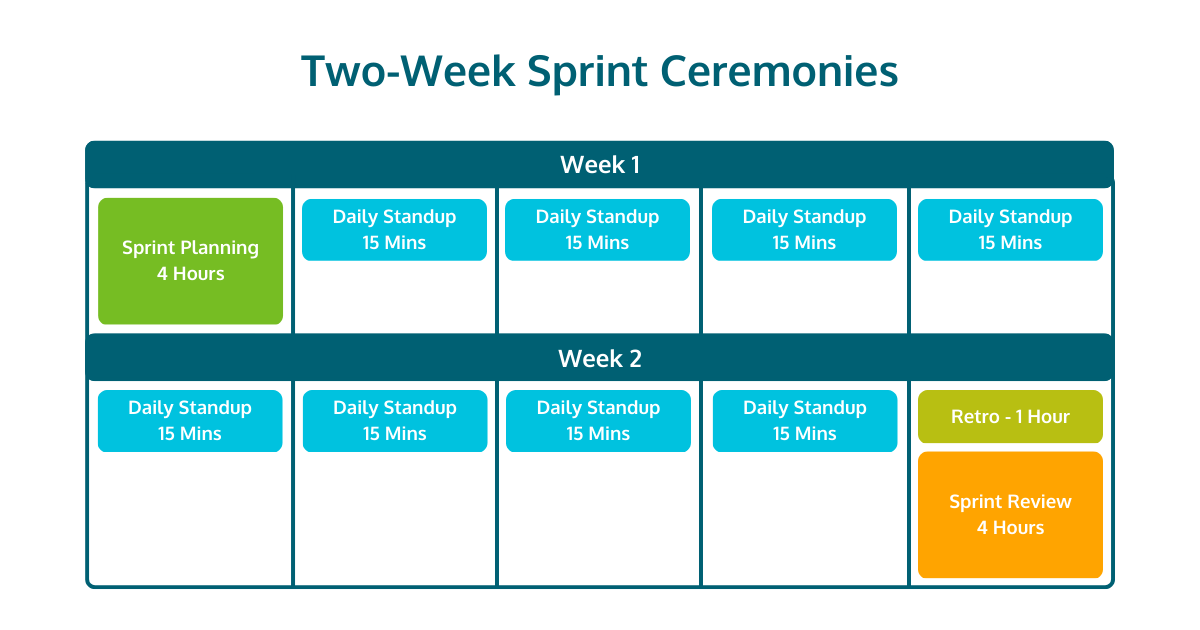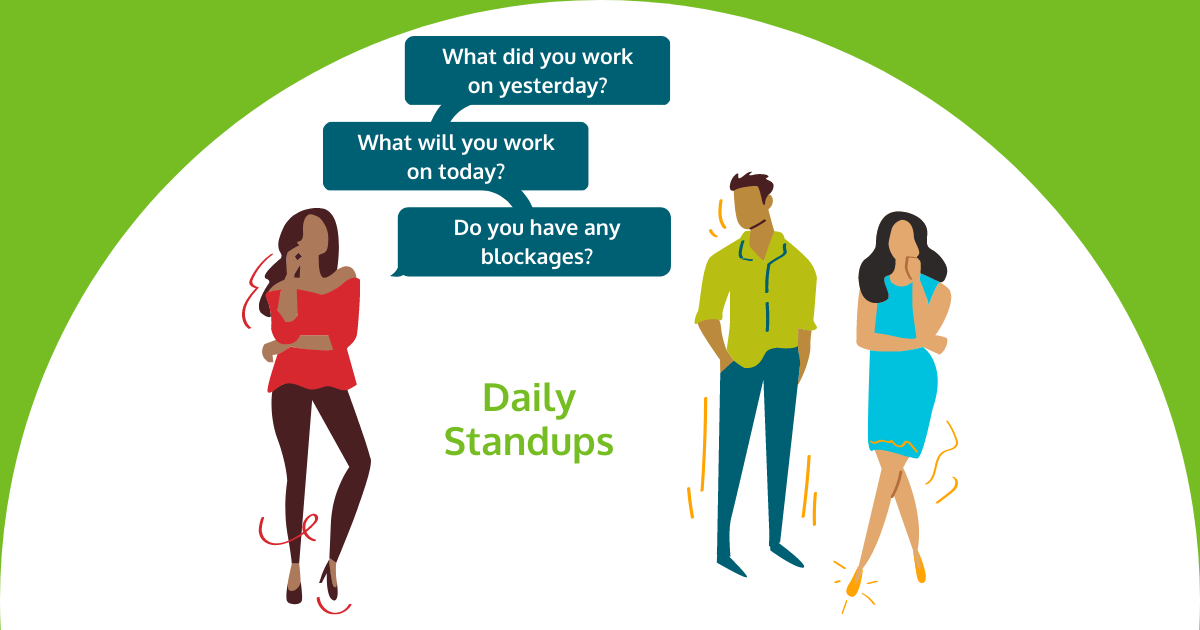Improve your Marketing Ops every week
Subscribe to our blog to get insights sent directly to your inbox.
Confront your process problems head on with a Sherpa by your side.
Explore support options that are tailored to meet you wherever you are on your climb.
Browse our pioneering Agile marketing courses
Learn from the stories of marketers already on the road to process improvement.
Featured Resource

State of Agile Marketing
Learn from 8 years of study on how marketers are increasing their agility.
Download Report
As important as things like an Agile mindset are to creating effective teams, ultimately no team or process is better than the Agile ceremonies that make up its building blocks. So if you’re looking to make your Agile teams more effective than ever, now is the time to invest in better Agile ceremonies.

Let’s begin by running through some basic definitions of each type of ceremony in case you aren’t familiar. After all, not all Agile teams will use each of them. For example, you might use Kanban and never run retrospectives. But, even though they aren’t traditionally part of Kanban, they can bring a lot of value.
Unlike Kanban, Scrum and hybrid models both break work down into sprints which typically last a few weeks. The meeting itself will generally begin with time for questions anyone may have about the sprint you just completed. Then the team can run through what the goals for the upcoming sprint should be with the product owner or stakeholder,
Teams then estimate how much work tasks will require and adjust the scope of the sprint in order to ensure the amount of work is realistic. Tasks are then assigned and the sprint can begin. Typically, you want to set aside two hours of time per week of sprint. So if your sprints last two weeks, your sprint planning should last around four hours.
While standups are more closely associated with Scrum, they can be used in Kanban and hybrid models as well. These short daily meetings enable teams to quickly sync on what needs to happen, flag blockages, and generally improve visibility.
These meetings should be held in front of the board where the team manages their work, and only last around 15 minutes. This is why they are called “standups,” because ideally everyone should remain standing during the entire meeting to encourage things to move more quickly.
The most basic structure for the standup itself is for each team member to answer these 3 questions with 1-2 sentences:
These three questions give a quick overview of everyone’s status, creating visibility and efficiently calling out problems before they can grow. There are other ways to structure standups, but we’ll cover those later.

One of the key goals of Agile is creating a culture of continuous improvement. Perhaps the best way to do that is by holding regular retrospective meetings in which team leaders can listen to feedback and ideas from everyone on how team processes can be improved. As the name implies, retrospectives are times for reflection, asking questions, brainstorming, and generally getting teams on the same page about where they are and how they can improve.
The idea is to address the reality that most teams rarely take time to look back on how things went and actively develop ideas for future improvement. This makes it far more difficult to resolve problems and develop improvements. This is why retrospectives are so critical.
Typically, retrospectives will happen at the end of a sprint. However, if your team doesn’t break its work into sprints, you can run retrospectives every few weeks or months.

Often confused with retrospectives because they also generally come at the end of sprints and focus on gathering ideas for improvements, sprint reviews are unique and important. While retrospectives focus on process improvement, sprint reviews instead focus on optimizing the product itself.
These reviews are a time to run through the progress the sprint has made towards a larger goal, like a product release date. This is why sprint reviews are not generally used by teams who aren’t working on a single product that each sprint contributes to. For example, an Agile sales team won’t necessarily need to hold sprint reviews.
Getting the most out of your Agile ceremonies starts with always being on the lookout for ways to improve them. Whether you’re just starting to use Agile on your team or have been using it for years, you should always be on the lookout for ways to shake things up or be more effective. Here are some easy ways you can improve your Agile ceremonies.
Perhaps the single greatest challenge of sprint planning is getting estimation right. If your team can’t consistently estimate how much time or effort a task will take, there’s no way for it to do effective sprint planning. Instead of simply asking the team how many hours something will take and writing down the first answer someone gives, you can gamify the process for better results.
Try using a system like planning poker to accurately gauge workloads and ensure no one is overburdened. Also, be sure you’re incorporating lessons from your retrospectives into your next round of sprint planning. Finally, if your team is having trouble, go through and ensure your user stories and definitions of done are clear throughout.
There’s no getting around the fact that structuring daily standups the exact same way can get stale over time. Teams can easily begin to feel like they’re just going through the motions, hurting morale. That’s why we recommend varying how you approach your standups every once in a while to make sure they always feel fresh and vital.
We said it earlier but it’s worth repeating: retros are critical for unlocking the full potential of Agile! However, bad retros can be worse than useless, making team members feel their voices aren’t being heard and that progress isn’t being made.
Much like with daily standups, retro formats can get stale over time, so one approach is to vary how you run them.
Another question to ask yourself is whether everyone’s voice is being heard. It’s easy for the loudest people in the room to dominate retrospectives, so using tools like anonymous feedback can help others contribute feedback and ideas. Also, don’t forget to take opportunities to celebrate wins as a team!
Finally, you want to ensure the ideas you get from your retrospectives are actually acted on. Whether you use a specialized app or do it yourself, be sure to track suggestions, structuring them as experiments and trying them out before reviewing the results in future retrospective meetings.
Sprint reviews are another great time to celebrate wins even as you strategize ways to improve. Another common complaint many teams have about their sprint reviews is that they drag on and feel unstructured. The best approach is to give your reviews a fixed time (no more than two hours) to help ensure things are run efficiently and people don’t lose focus.
Also, be sure your reviews reference back to your user stories instead of just saying things were done and moving on. This helps reinforce alignment and shows how the work everyone does contributes to larger goals.
Of course, there are infinite ways to adjust and improve your Agile ceremonies, the trick is knowing which changes will help and which won’t. That knowledge ultimately comes from a solid understanding of Agile fundamentals.
Knowing how each of these ceremonies fits into Agile principles and practices is what ensures you and your team don’t stay into “fake Agile”, wherein you all think you’re following Agile but some key mistakes are preventing you from reaping the benefits. Fortunately, getting access to those fundamentals has never been easier.
We offer both Instructor led and self-paced Business Agility Fundamentals courses that will equip you with the solid foundation you need to begin your Agile journey. Of course, that includes working with you to get those Agile ceremonies just right. Try them out and start on the path to Agile greatness today!
Subscribe to our blog to get insights sent directly to your inbox.
Subscribe to our blog to get insights sent directly to your inbox.